jon av bergborrverktyg för underjordiska gruvor och tunnlar
I urvalsprocessen för borrstång beaktas huvudsakligen följande faktorer: gängan på borrstångens fogända; längden på framdrivningsbalken för att bestämma längden på borrstången; den korrekta diametern på borrstången gör att borrstången kan rotera fritt och har en rimlig. Ringfrigången uppnår en effektiv slaggutmatningseffekt. För stort eller för litet ringrumsspel kommer allvarligt att påverka slaggutmatningseffekten; ovanstående faktorer kombineras för att bestämma gängan på borrkronans ände.
Valet av borrkrona: Som ändkontakt med berget, om borrkronan effektivt kan använda energin för att bryta berget och minska reaktionskraften så mycket som möjligt (reaktionskraften kommer att allvarligt skada borrkedjan och utrustningen), Urvalet är särskilt viktigt.

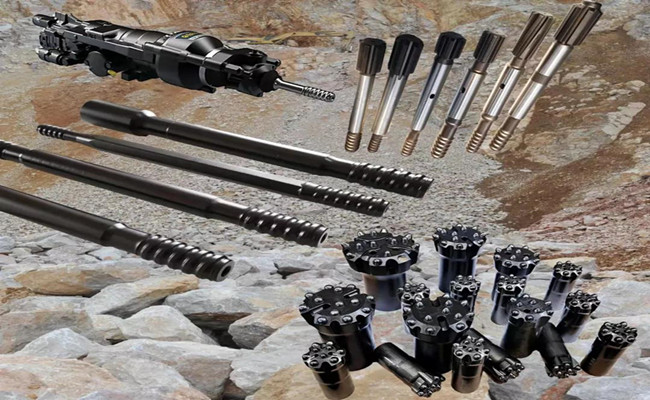
I hela borrverktygssystemet är antalet och modellen av borrkronor ofta fler än andra borrverktyg. Borrkronan är en kombination av en metallkropp och en hårdmetall, och det finns vanligtvis två typer av pinnborr och korsborr. Kolonntandskrona har blivit det vanligaste valet idag på grund av dess högre borreffektivitet, bättre slitstyrka och goda återslipningsegenskaper.
Enligt olika applikationsförhållanden (bergförhållanden, borrkrav) för att välja lämplig legeringskolonntanddiameter, form, utsprångshöjd och sidotandsvinkel. Det finns två huvudtyper av val av legeringsform - knappbits och spetsiga borrkronor, som huvudsakligen tar hänsyn till kraven på borrhastighet, borrnoggrannhet och borrkronans livslängd. Det bör påpekas att den vassa kuggkronan även kommer att uppnå goda resultat i hårda bergsförhållanden, eftersom den kommer att få ett större rotationsmotstånd för att säkerställa att borrkedjan är tätt sammankopplad, och det kommer också att göra hålet mer vertikalt.
På liknande sätt har olika konstruktioner av borrens metallkroppsdel olika tillämpningskrav. Genom den olika utformningen av slaggtråget och dräneringshålet kommer den olika utformningen av själva metallkroppen att vara lämplig för olika stenhårdhet och bergnötning.
2. Demand characteristics of drilling tool materials.
In the above-mentioned complicated situation, the material of the rock drilling tool is required to have four characteristics. (1) Robustness. To achieve minimal energy loss and ideal drilling verticality, drilling tool materials are required to have good robustness and reasonable drilling tool dimensions. (2) Fatigue strength. In the working process of the drilling tool system, the drill is required to have extremely high fatigue resistance, which is subjected to extremely high compressive stress and tensile stress at a very high frequency. (3) High strength. Working under high-power rock drills requires extremely high strength of the drilling tool system to minimize the possibility of drilling tool fracture. (4) High wear resistance. For rock drilling tools, high wear resistance can ensure a longer life of the thread. The requirements for the alloy part of the drill bit are especially higher. The above four characteristics of rock drilling tools are not a positive relationship, or even a negative relationship.
Therefore, by achieving higher drilling economy, drilling quality, material selection, product design and advanced heat treatment processes, the above four characteristics are optimized to achieve the best performance.
3. Drilling characteristics.
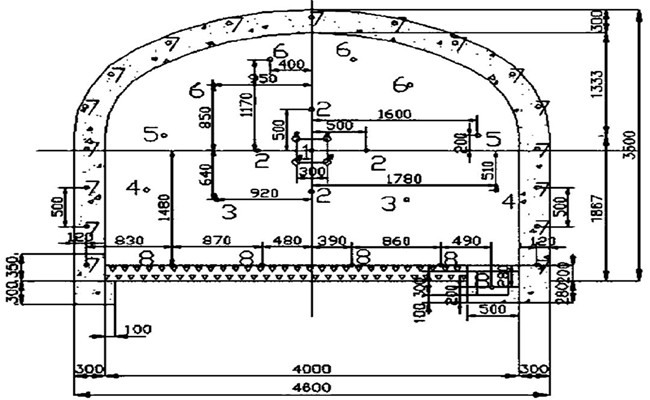
In the process of underground drilling, important drilling characteristics mainly include the following aspects.
(1) Drilling diameter. The selection of the aperture requires comprehensive consideration of the roadway size, drilling rig specifications, rock drill power, hole depth, blasting method and rock hardness. To sum up, the choice of aperture mainly needs to be considered: the number of holes in the working face, the number of blasting required, the drilling accuracy and the size of the rock-breaking particles, the requirements of roadway support, and the number of shotcreting.
(2) Hole depth. Before designing and arranging holes, it is necessary to comprehensively consider the depth of drilling. To achieve the ideal balance of drilling depth and rock drilling shifts, it is also necessary to comprehensively consider rock conditions, work plans and shift arrangements. In roadway operations, the most important purpose is to achieve the maximum single-pass roadway footage.
(3) The verticality of the hole. Similarly, there are many factors that affect the verticality of the borehole. To achieve higher productivity, drilling accuracy is as important as drilling speed. Therefore, the quality of drilling is as important as the number of holes per hour. Ideal vertical holes can achieve better blasting efficiency. Hole deviation is generally due to the non-straight hole, poor hole opening and deviation due to rock conditions. The correct drilling tool can minimize the deviation during the drilling process.
4. Deslagging.
Efficient drilling speed is inseparable from an effective slag discharge effect. On the contrary, it will reduce the life of the drilling tool, accelerate the wear of the rock drilling equipment, reduce the drilling speed and drilling accuracy. In short, if effective slagging cannot be achieved, the economics of the entire operation will be greatly reduced.
5. Reaming.
In the process of tunnel drilling and blasting, a cut hole with a diameter of 64-127 mm is usually used in the center. In actual operation, a small hole of 35-45 mm is drilled first to ensure the accuracy of the cut hole and reduce the consumption of drilling tools. The main purpose is to obtain a space for blasting expansion in advance to achieve a better blasting effect and effective depth.
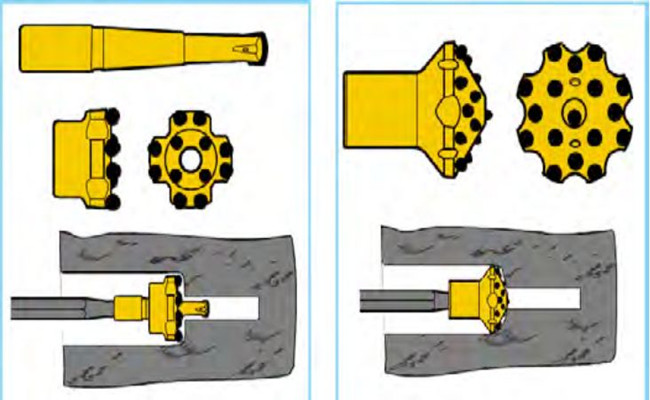
Choice of rock drilling tools
In the process of roadway construction, companies usually choose the corresponding equipment according to the roadway size, rock compressive strength, rock compactness and integrity. At present, the supporting rock drills for general domestic rock drilling equipment mainly include Sandvik's HLX5 and HL500, Epiroc's COP1238, COP1638, COP1838, RD18U, Montabert's HC25, HC28, HC50, HC95, HC109, and YONDA's YDH210. These advanced and high-power rock drills have extremely high requirements for the performance of drilling tools. The correct choice of drilling tools will provide basic guarantee and necessary conditions for efficient and high-quality drilling.
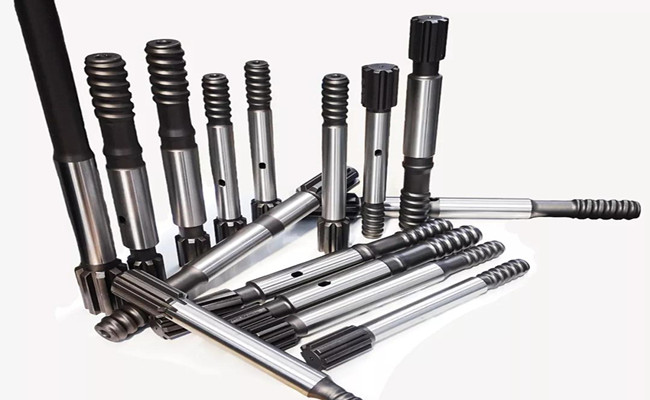
The choice of shank: The shank plays an extremely important role in the drill tool chain, mainly transmitting torque, propulsion pressure, and impact pressure. It must not only withstand the impact energy, but also withstand the rotation caused by the friction rock during drilling. Torque. The basic basis for the selection comes from the model and specifications of the rock drill, and the length of the shank is considered in conjunction with the length of the propelling beam and the drill pipe. Because the shank tail is closely connected to the rock drill, the internal structure design of the rock drill has already determined the diameter of the shank tail, the size of the rotating spline and the location of the drainage hole. Therefore, a long-life, high-performance, and high-stability shank must be selected to avoid damage to the internal structure of the rock drill due to abnormal failure of the shank.
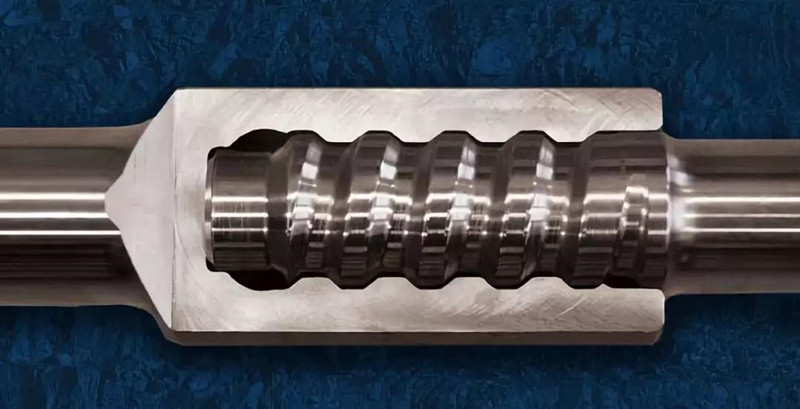
Among the above-mentioned general drilling rigs, HLX5 or Cop1838ME/HE rock drills are often equipped. In most cases, a 38mm threaded connection is adopted, that is, T38 or R38. The choice of T-thread or R-thread is mainly based on rock conditions and work needs. Its main features are as follows:
R thread, also called wave thread, can be tightly connected with a small turning force. In other words, the wave-shaped thread connection is tighter, thereby reducing the loss in the energy transfer process, and also reducing the heat generated by loosening. From another angle, the wave thread is not easy to disassemble. If the equipment can provide a large enough propulsion force to provide a large enough turning force, T-thread will be a better choice. T thread, also called rectangular thread, has higher pitch and larger contact surface. Therefore, it has the characteristics of wear resistance and easy disassembly.
Selection of connecting sleeve: If the connecting ends of the shank and the drill rod are both internally threaded or externally threaded, or the thread specifications are inconsistent, a connecting sleeve is required for connection. The connecting sleeve is mainly used to connect the shank and the drill rod, and at the same time, the end face of the drill rod and the shank are effectively connected face-to-face to effectively transfer energy. In modern high-power rock drills, T-thread is the first choice. In the process of roadway operation, T38 connecting sleeve is usually used. In order to achieve more effective energy transfer and make the connection tighter, a connection sleeve with a diameter of 52mm (T38) is usually used instead of the T38-55mm direct connection sleeve used in outdoor operations.
The choice of drill rod: As the most important part of the entire drill chain, drill rod is mainly used to transfer energy during the drilling process. In underground roadway rock drilling pipes, six kellys are used in most cases. Compared with the round drill pipe, the hexagonal drill pipe has more materials, higher fatigue strength, and the entire drill pipe has stronger rigidity. If the diameter of the end face of the impact piston is closer to the diameter of the end face of the shank, the energy transfer is more effective. Similarly, if the diameter of the drill rod is closer to the above-mentioned end face diameter, the greater the energy transfer to the drill bit can be obtained.
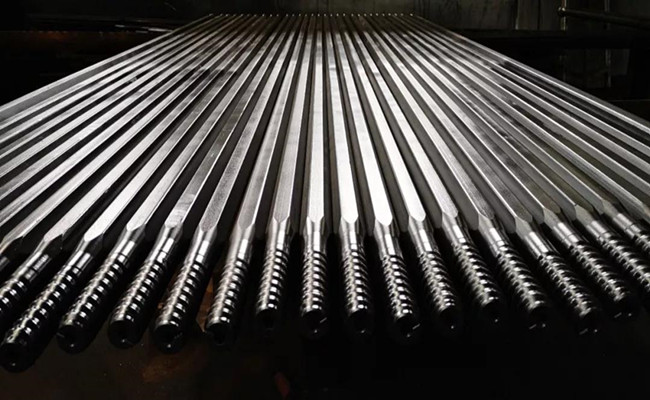
At the same time, the smallest possible hole diameter of the drill requires a smaller drill bit for the drill rod to achieve effective energy transfer. This concept has led to the fact that the drill pipe is usually divided into three sizes in roadway operations. Take the now commonly used T38-Hex35-R32 drill pipe as an example: the shank end adopts the diameter (38mm) close to that of the shank, namely T38 . The drill rod adopts Hex35, that is, the diameter of the inscribed circle of the end face of the drill rod is 35mm, which is slightly smaller than 38mm. The drill uses a smaller 32mm thread, namely R32. This design enables the drill rod to withstand greater impact pressure and rotational torque, and can provide threads with a suitable drill bit diameter, which greatly improves the economy and efficiency of drilling during tunnel operations.
In the selection process of drill rod, the following factors are mainly considered: the thread of the joint end of the drill rod; the length of the propelling beam to determine the length of the drill rod; the correct diameter of the drill rod allows the drill rod to rotate freely and has a reasonable The annulus clearance achieves an effective slag discharge effect. Too large or too small annulus clearance will seriously affect the slag discharge effect; the above factors are combined to determine the thread of the drill bit end.
The choice of drill bit: As the end contact with the rock, whether the drill bit can effectively use the energy to break the rock and reduce the reaction force as much as possible (the reaction force will seriously damage the drill chain and equipment), Selection is particularly important.
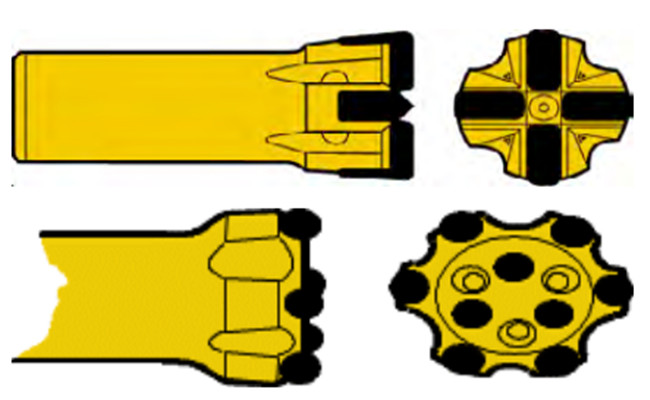
In the whole drill tool system, the number and model of drill bits are often more than other drill tools. The drill bit is a combination of a metal body and a cemented carbide, and there are usually two types of stud drill bits and cross-type drill bits. Column tooth bit has become the most common choice today because of its higher drilling efficiency, better wear resistance and good regrind characteristics.
According to different application conditions (rock conditions, drilling requirements) to select the appropriate alloy column tooth diameter, shape, protrusion height and side tooth angle. There are two main types of alloy shape choices-button bits and pointed bits, which mainly consider the requirements of drilling speed, drilling accuracy and bit life. It should be pointed out that the sharp tooth bit will also achieve good results in hard rock conditions, because it will obtain greater rotation resistance to ensure that the drill chain is tightly connected, and it will also make the hole more vertical.
Similarly, different designs of the metal body part of the drill have different application requirements. Through the different layout of the slag trough and drainage hole, the different design of the metal body itself will be suitable for different rock hardness and rock abrasion.




